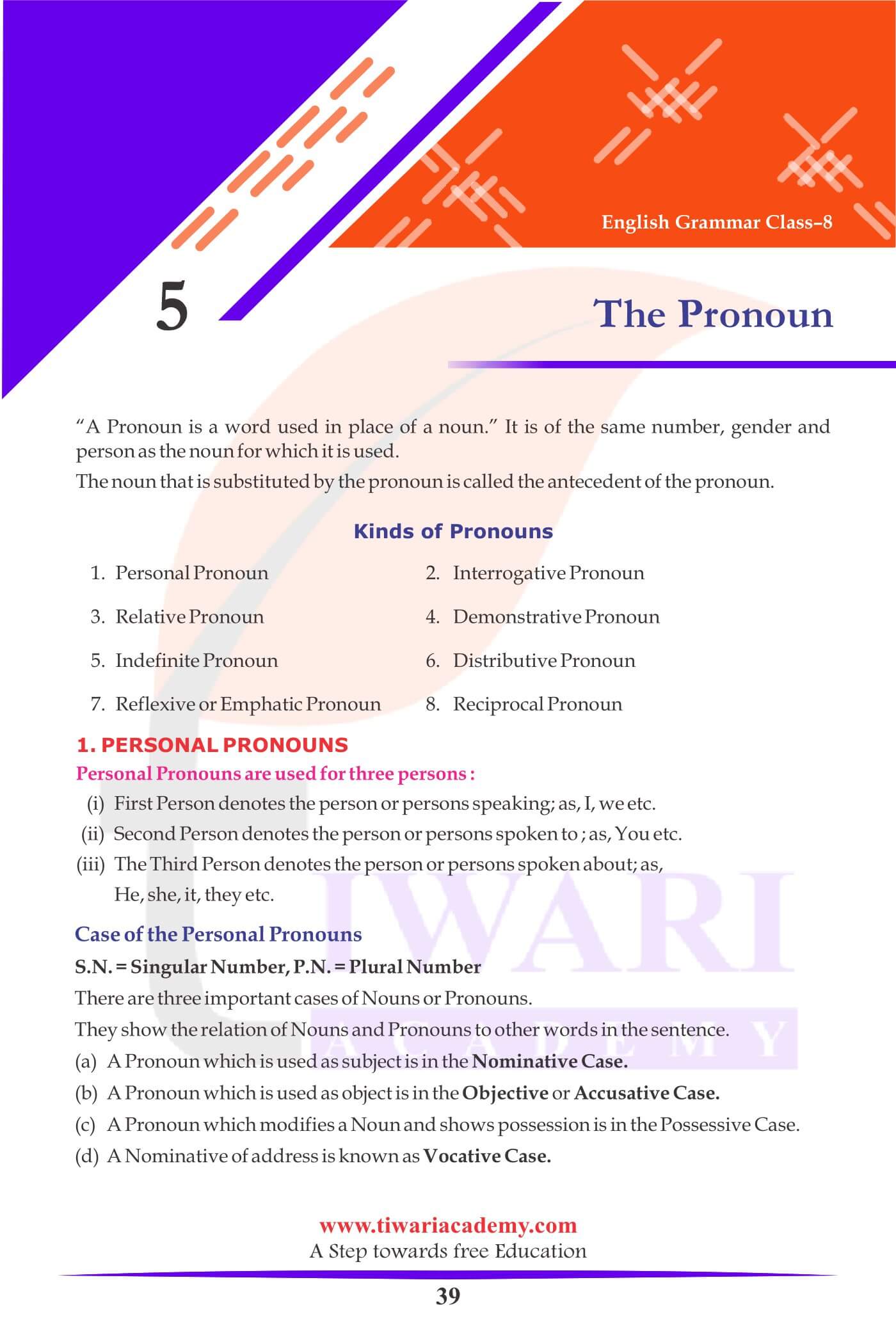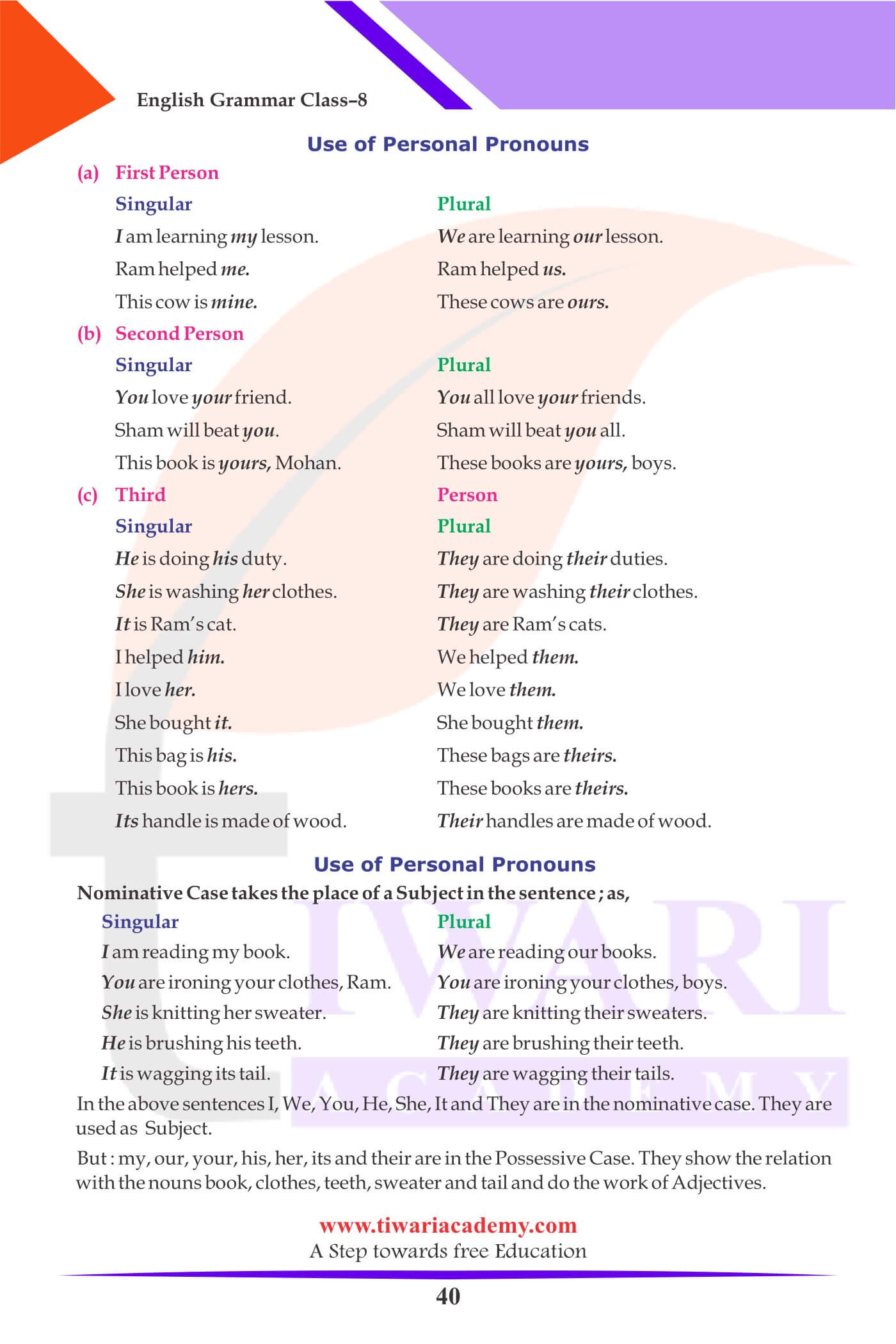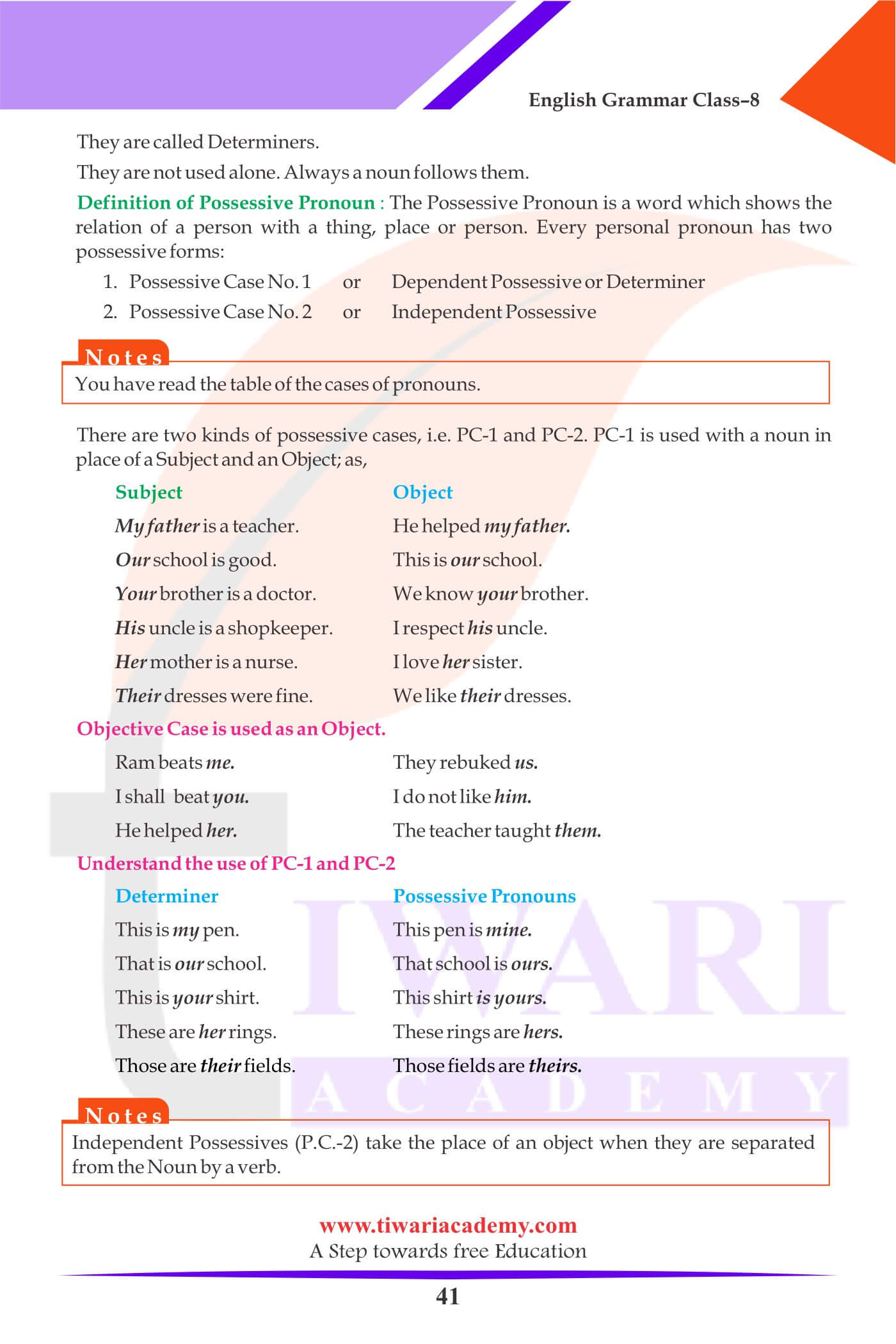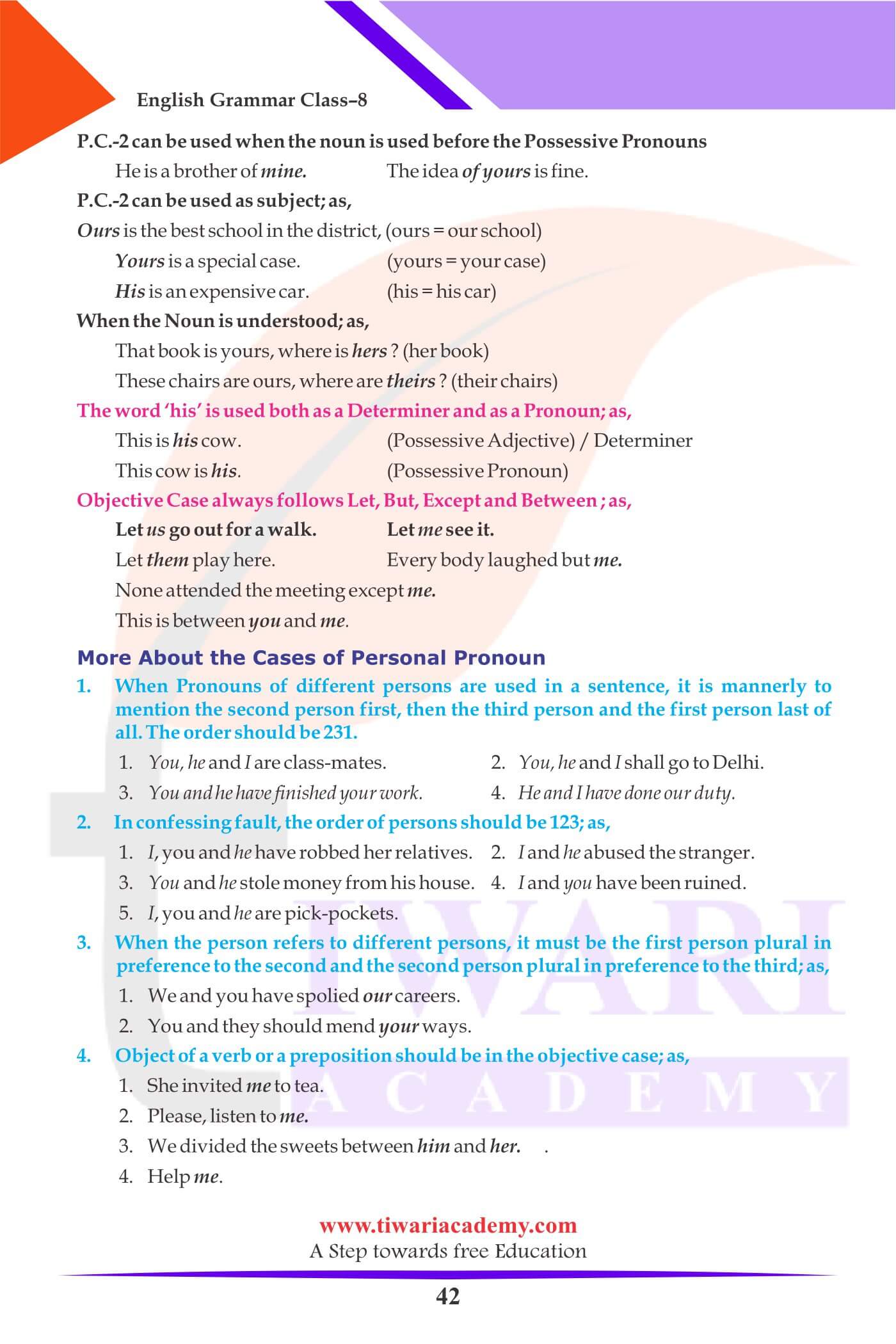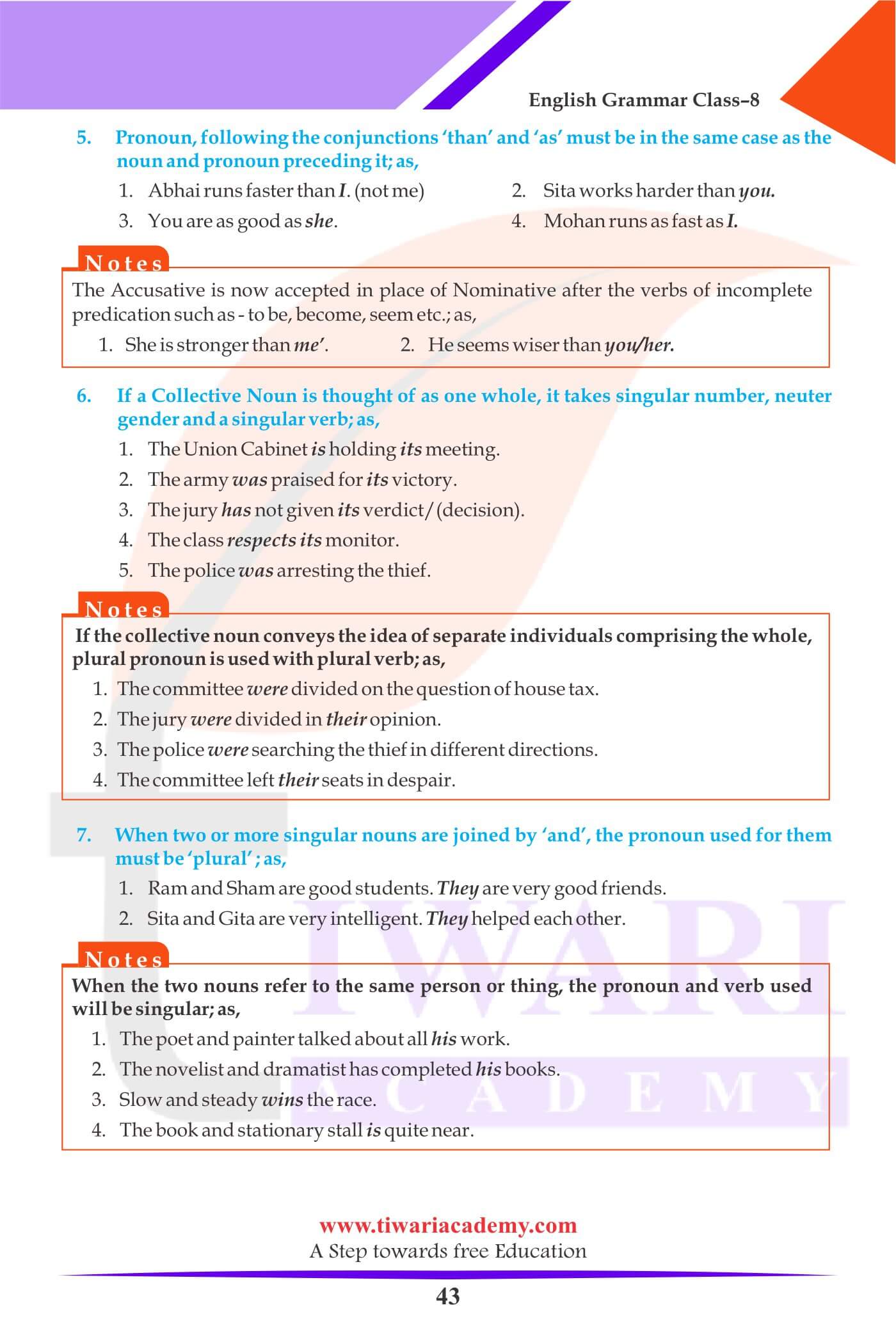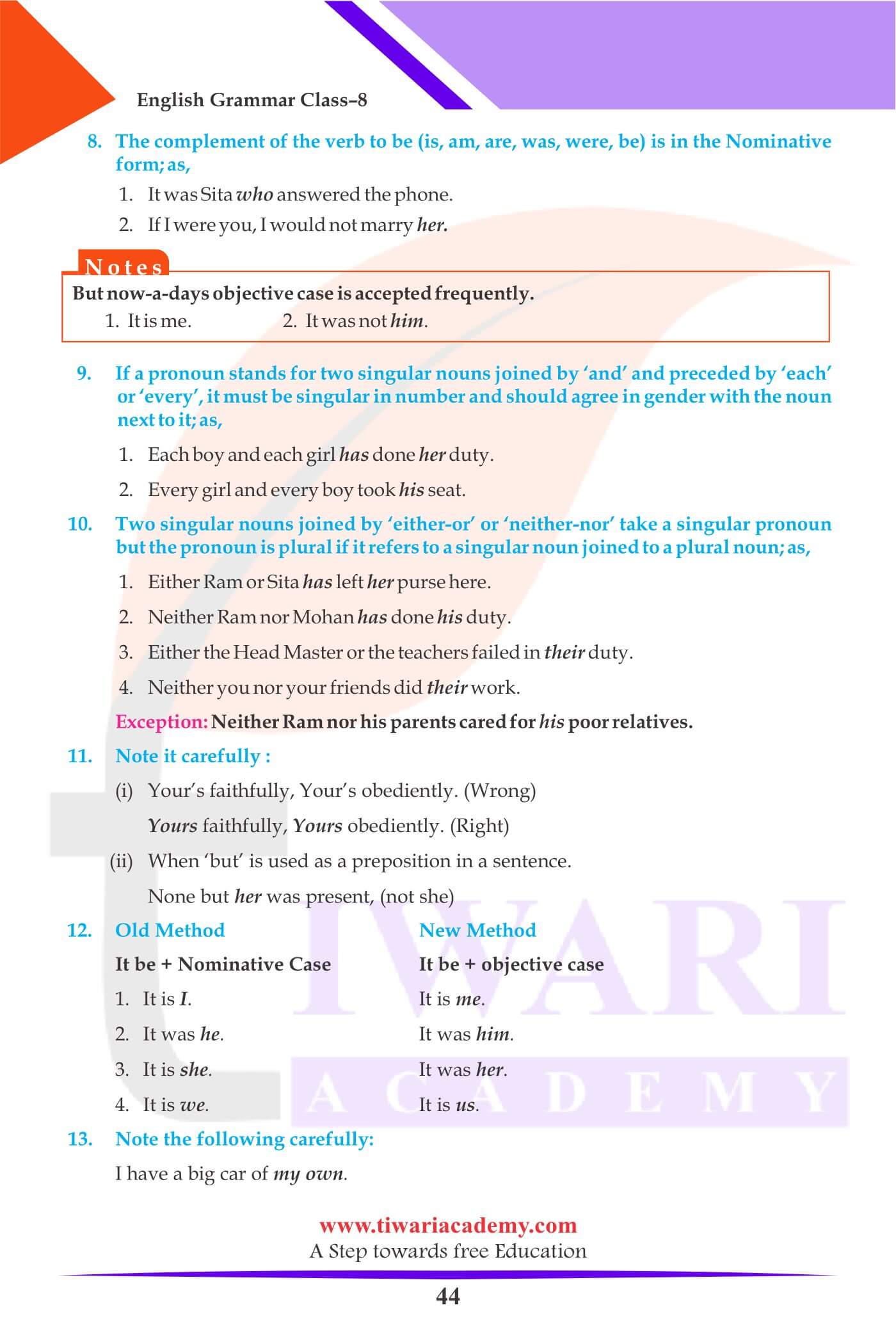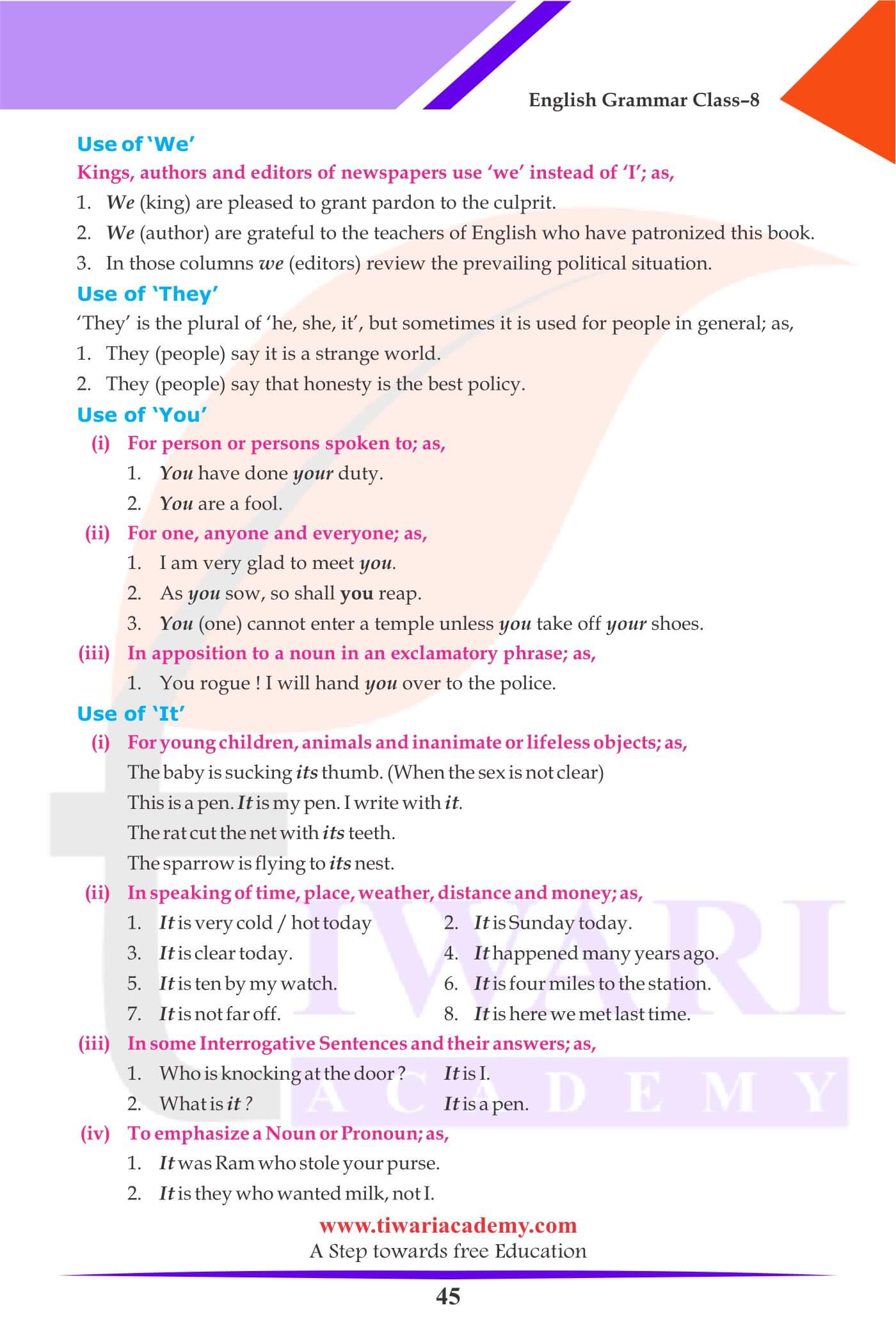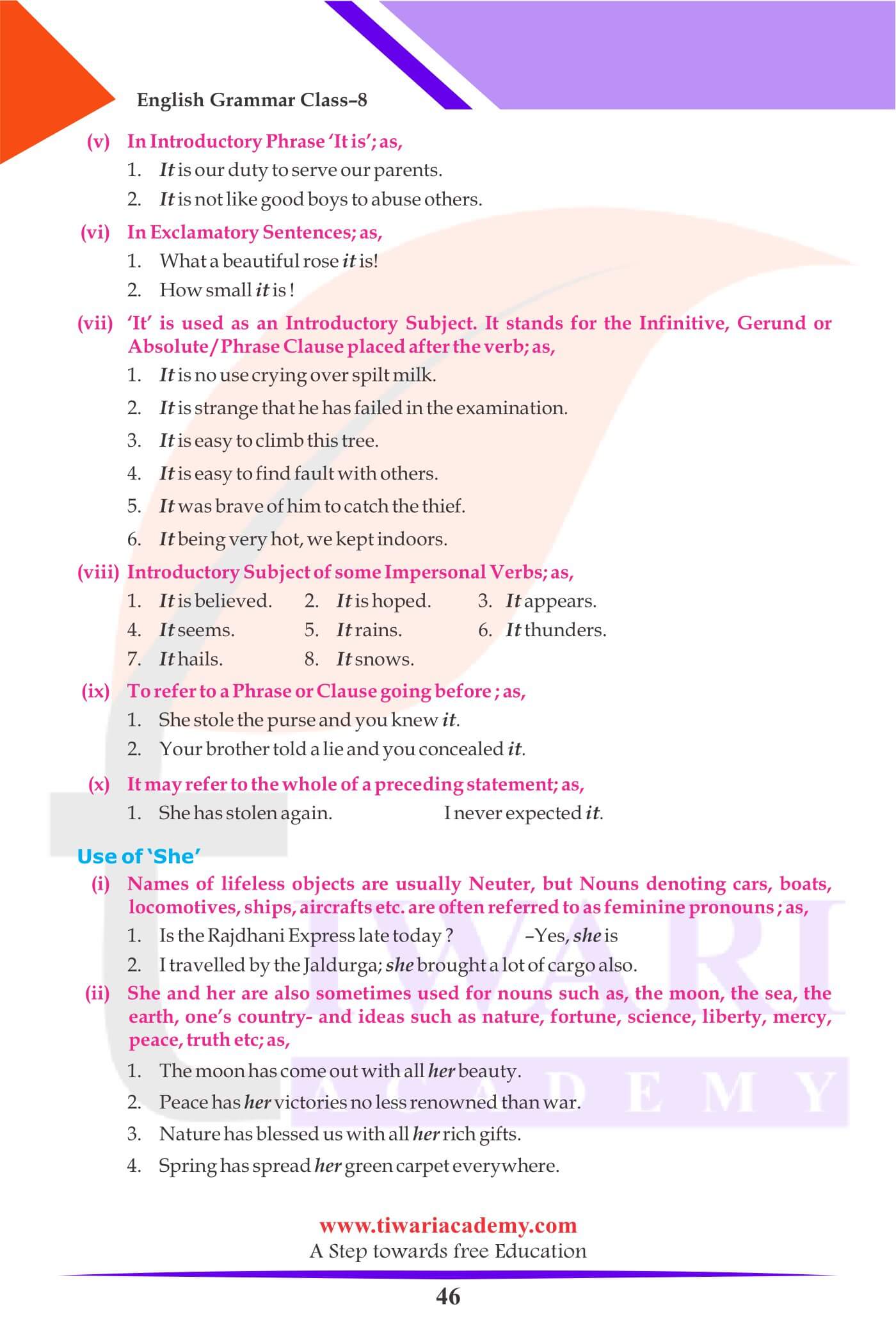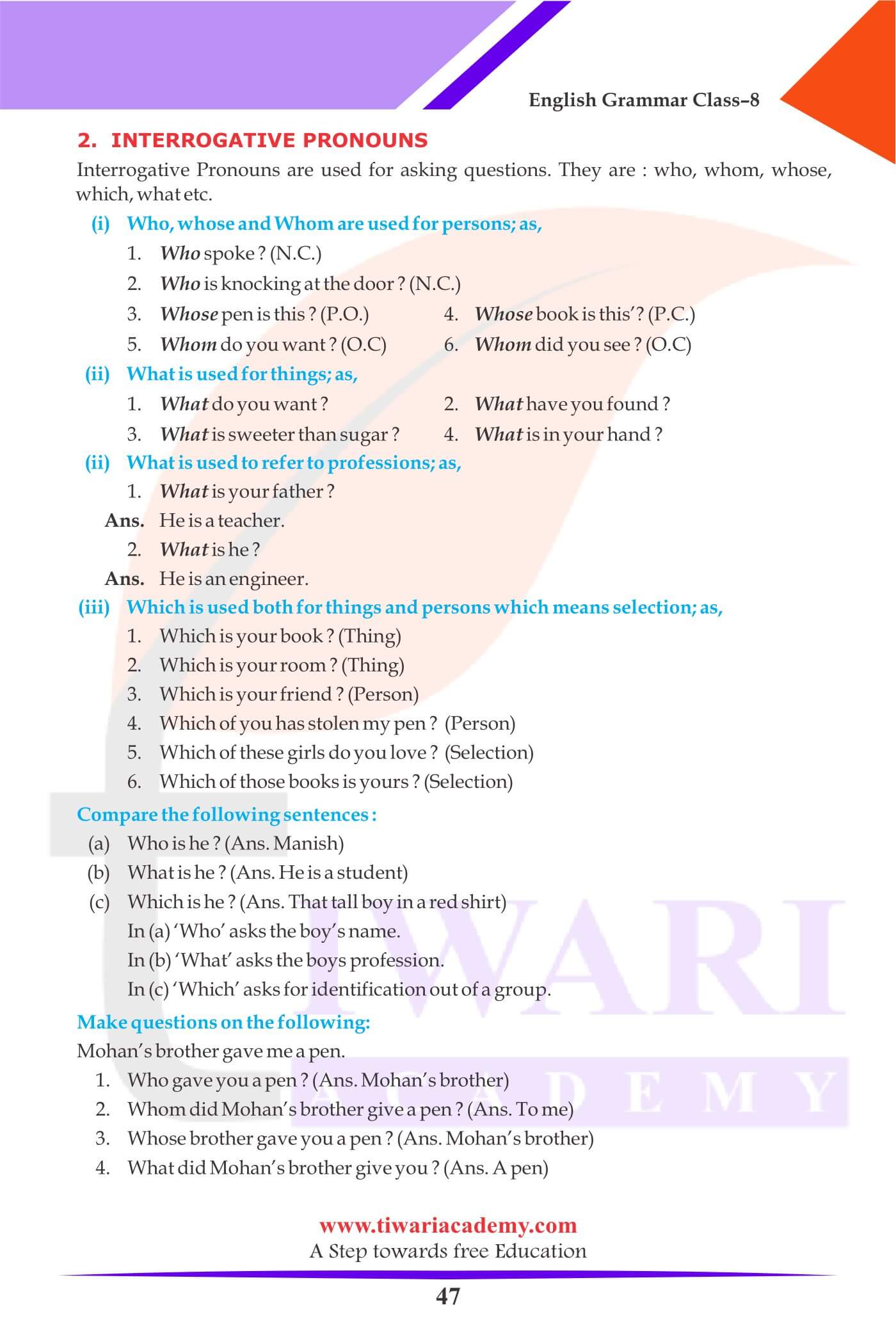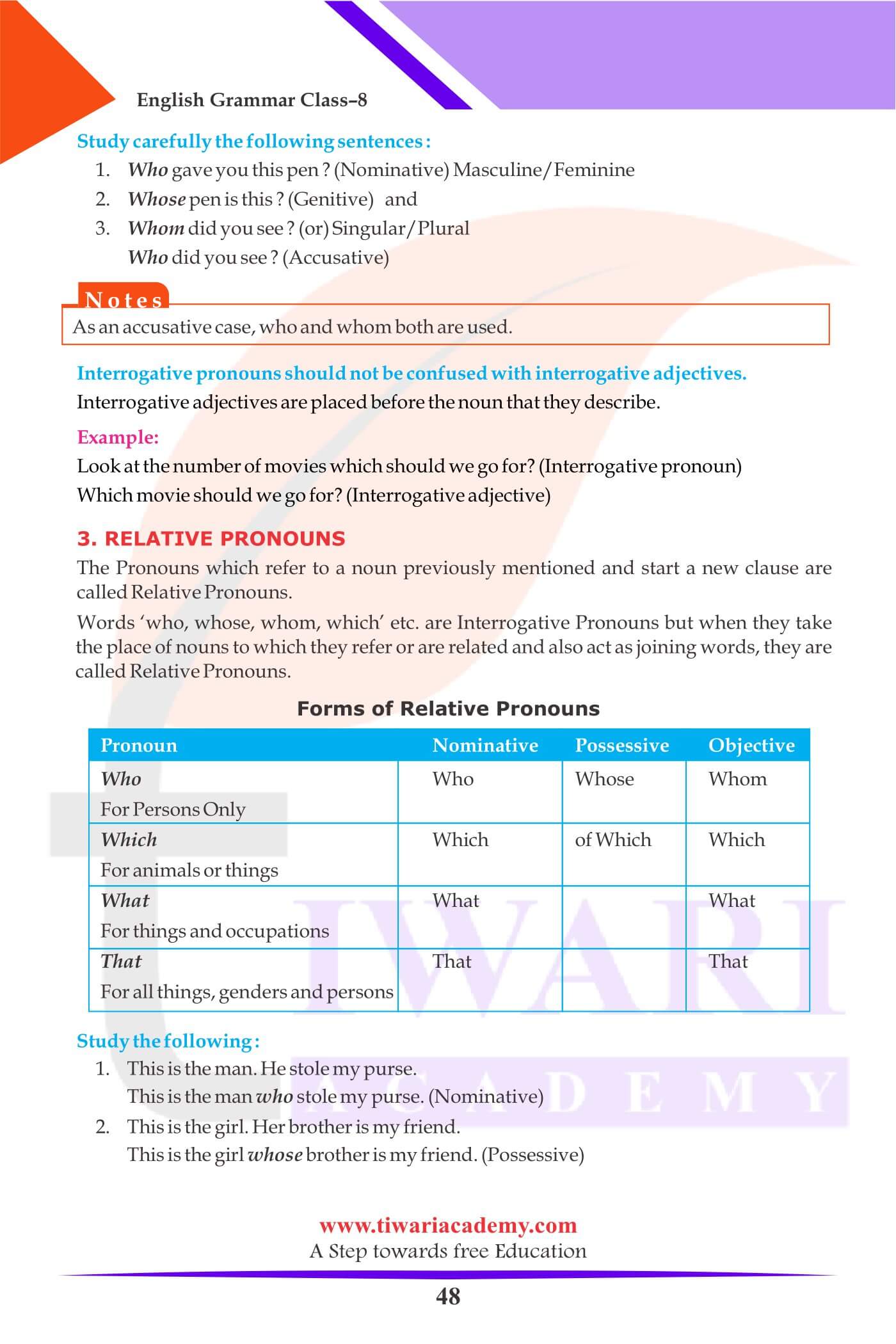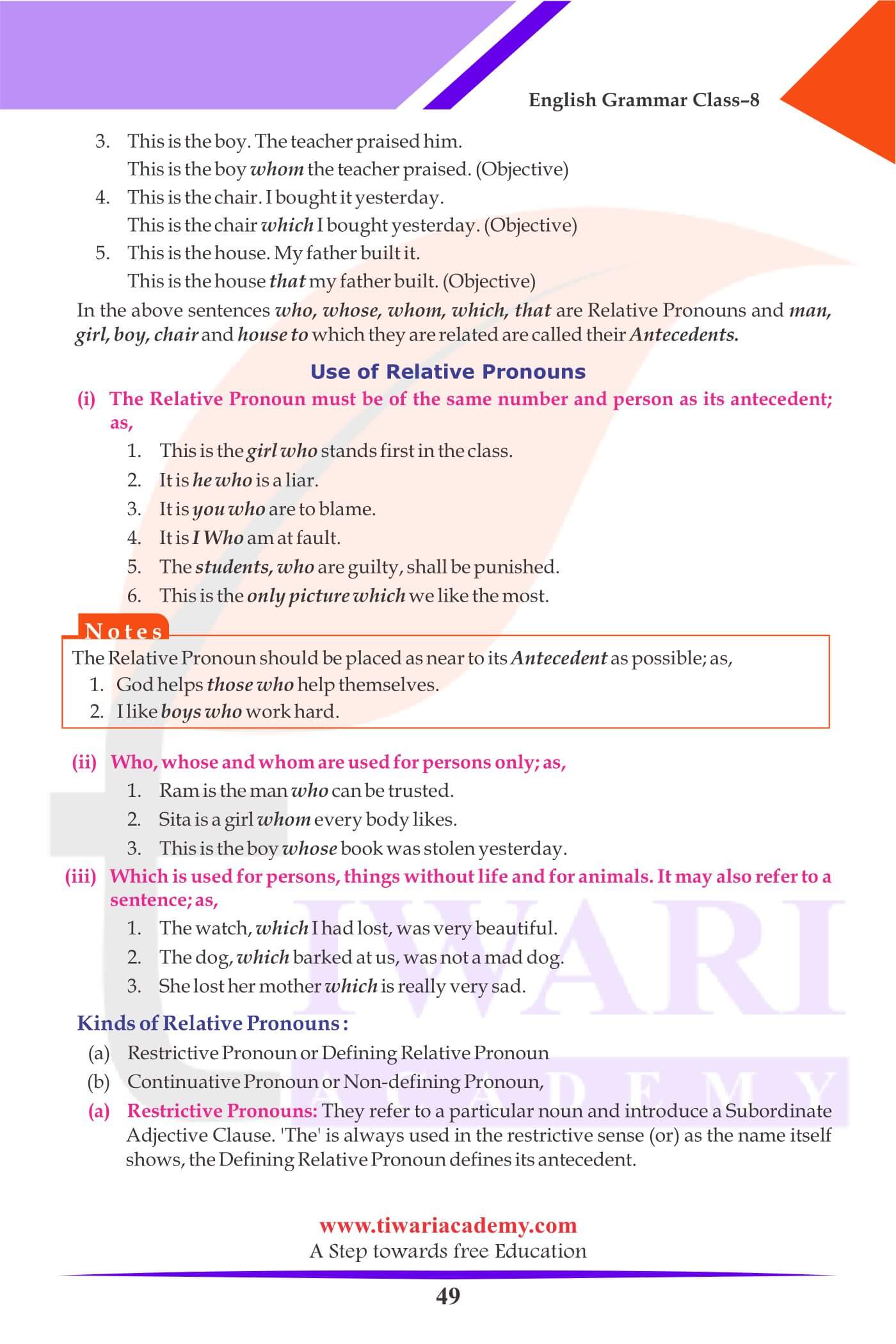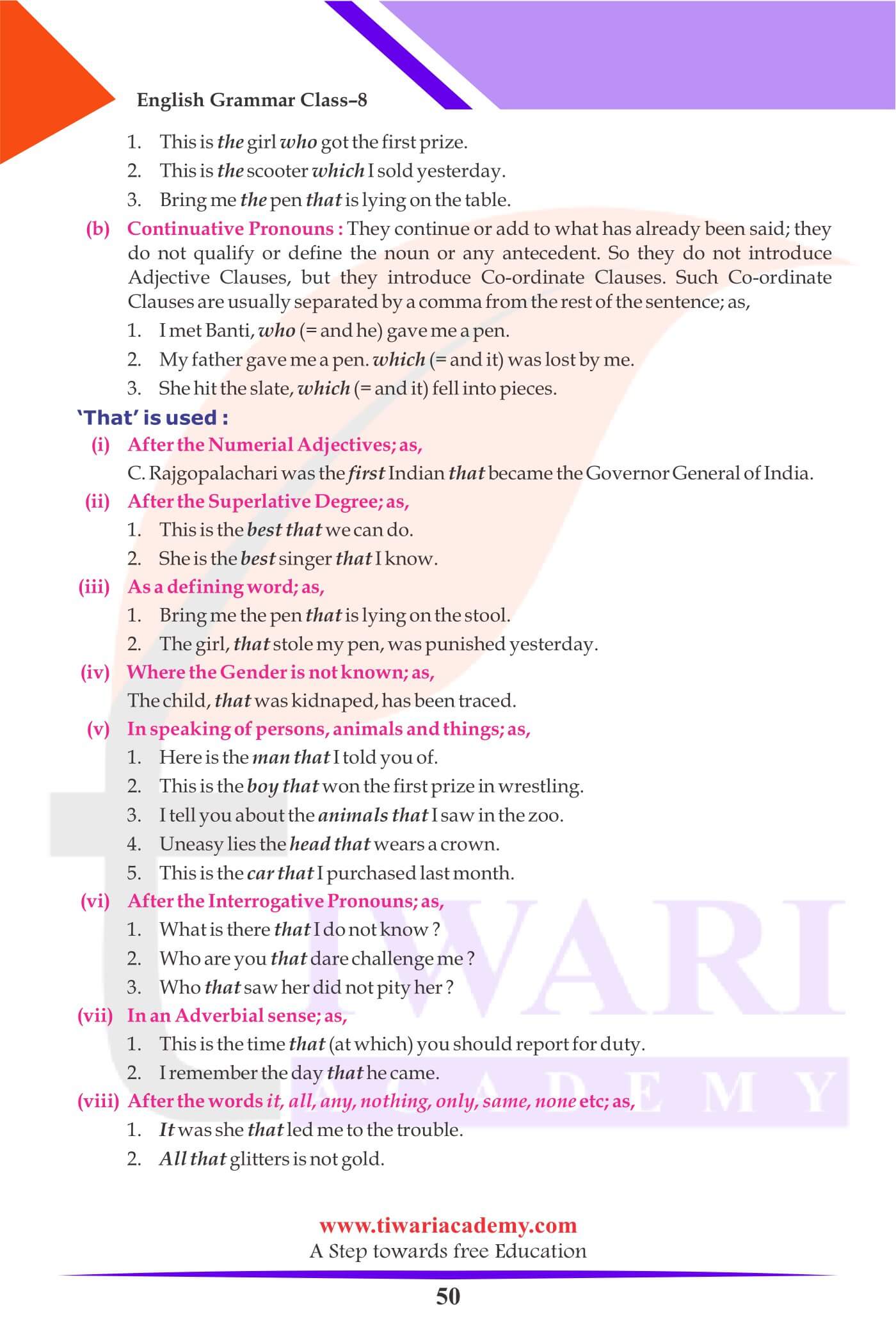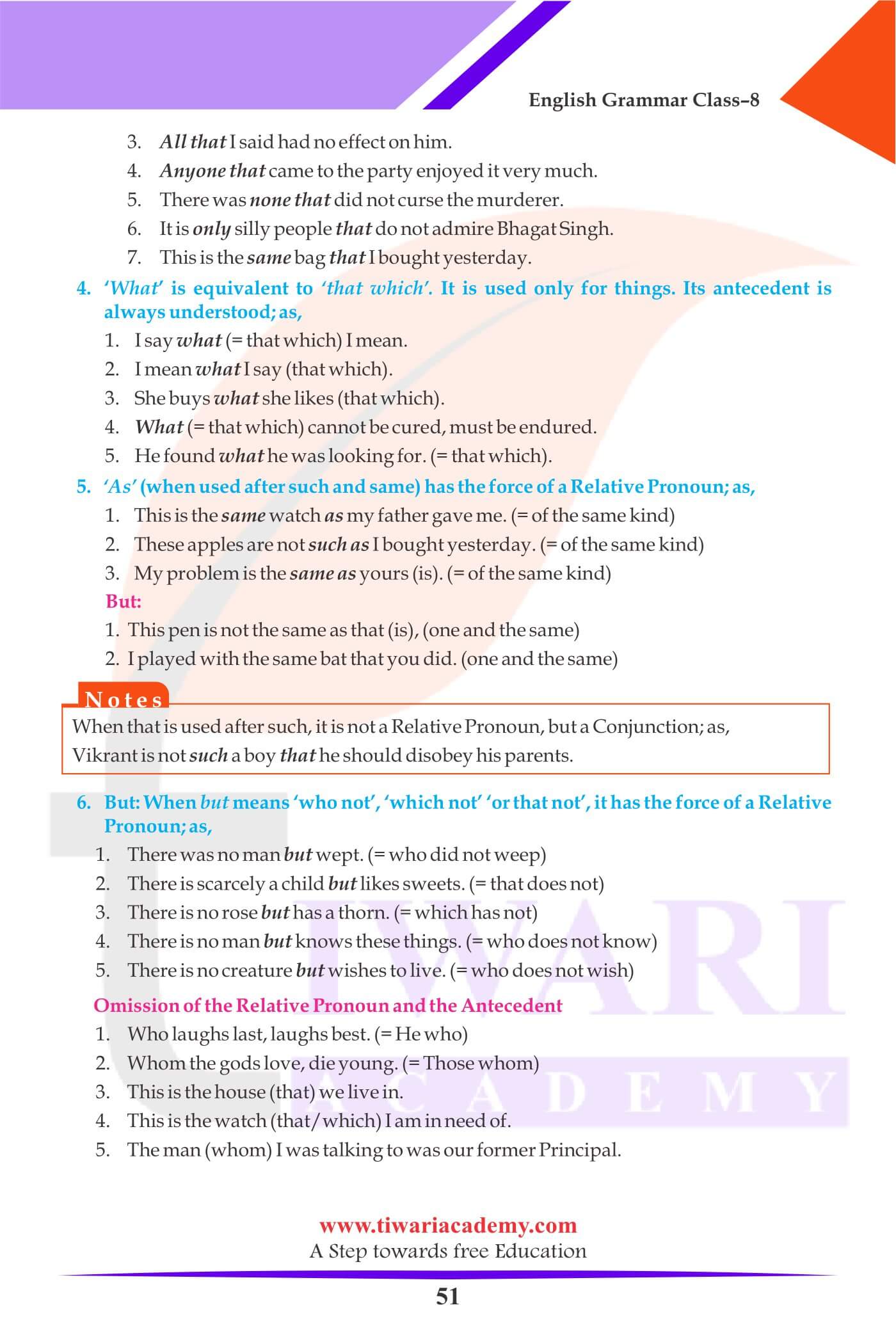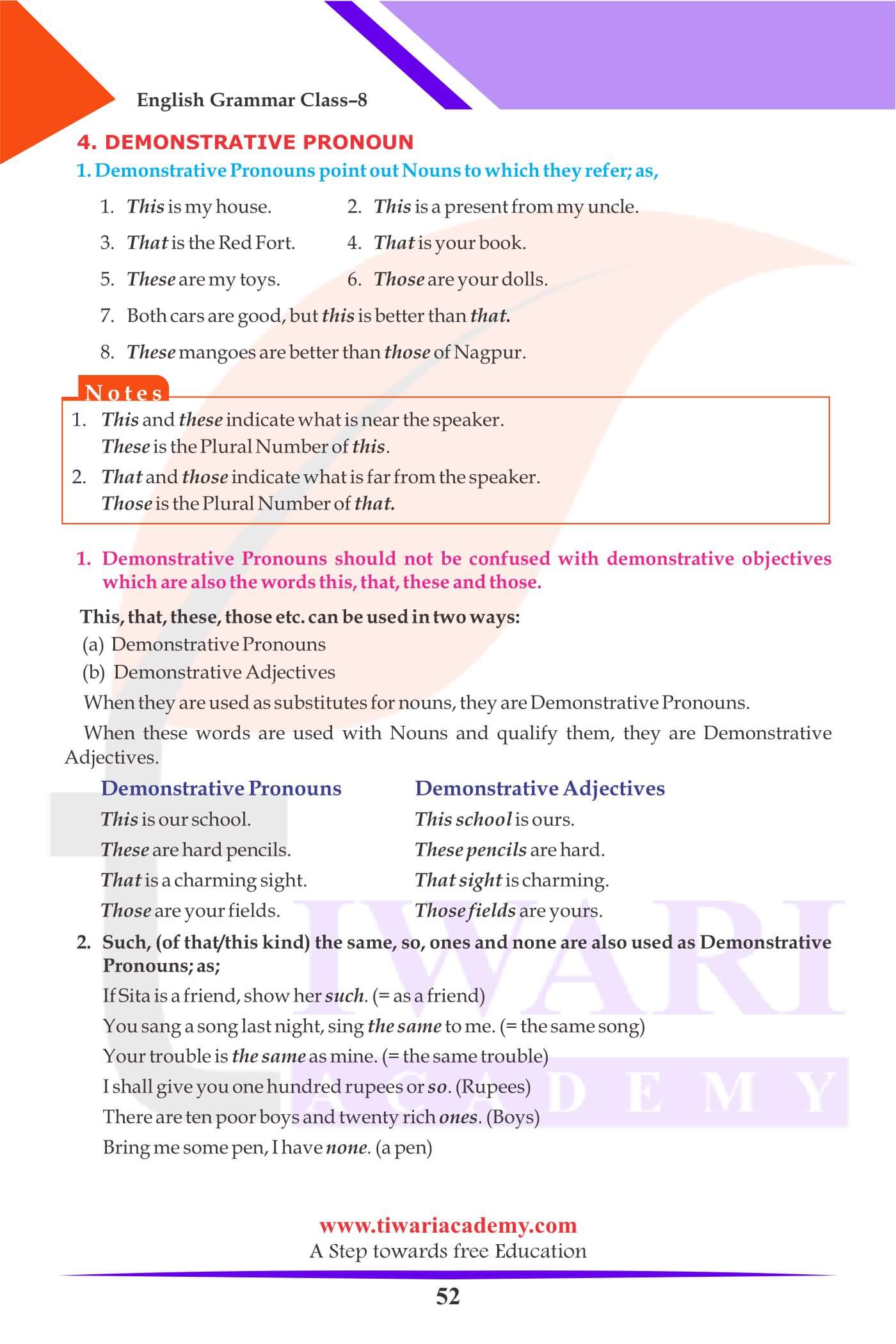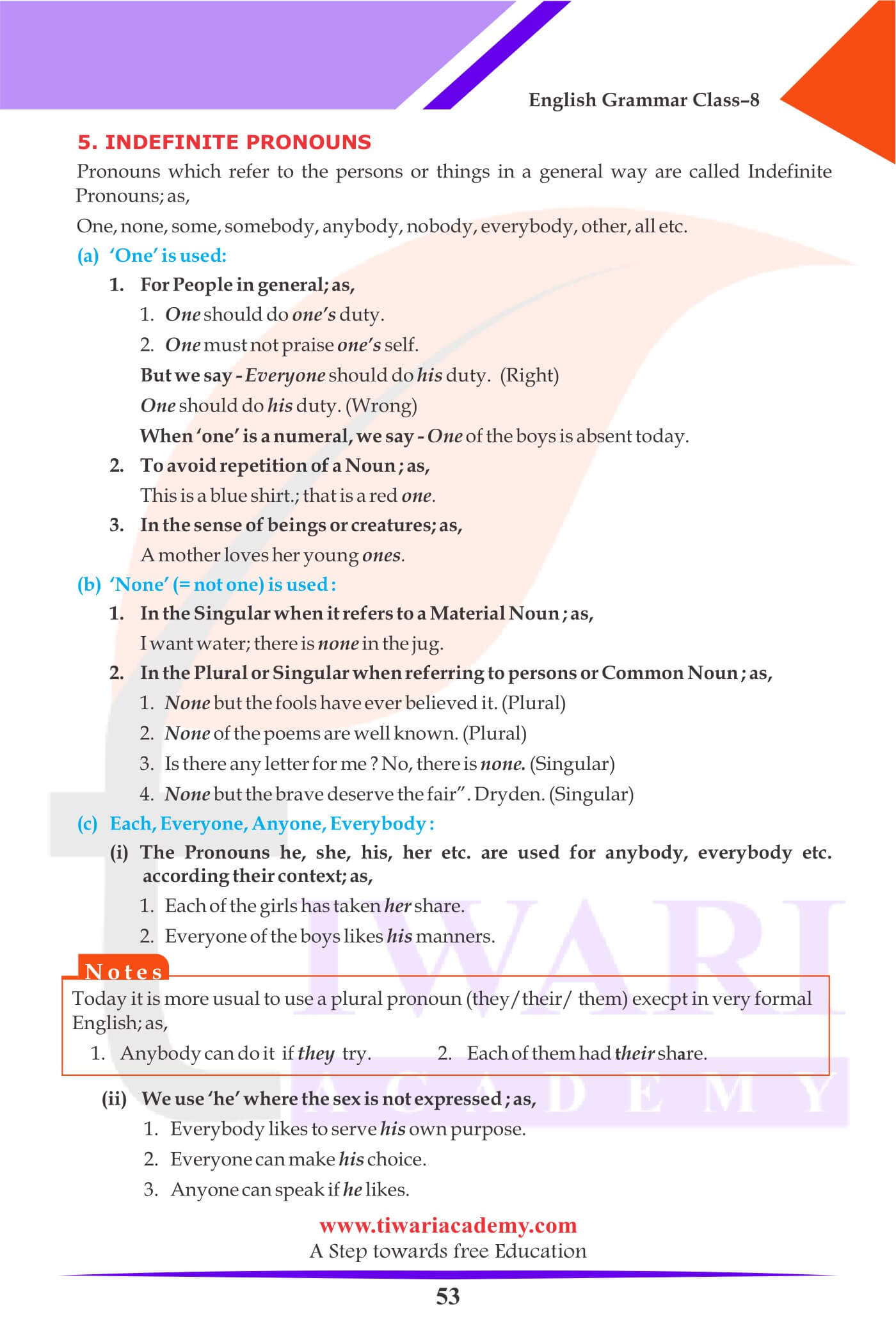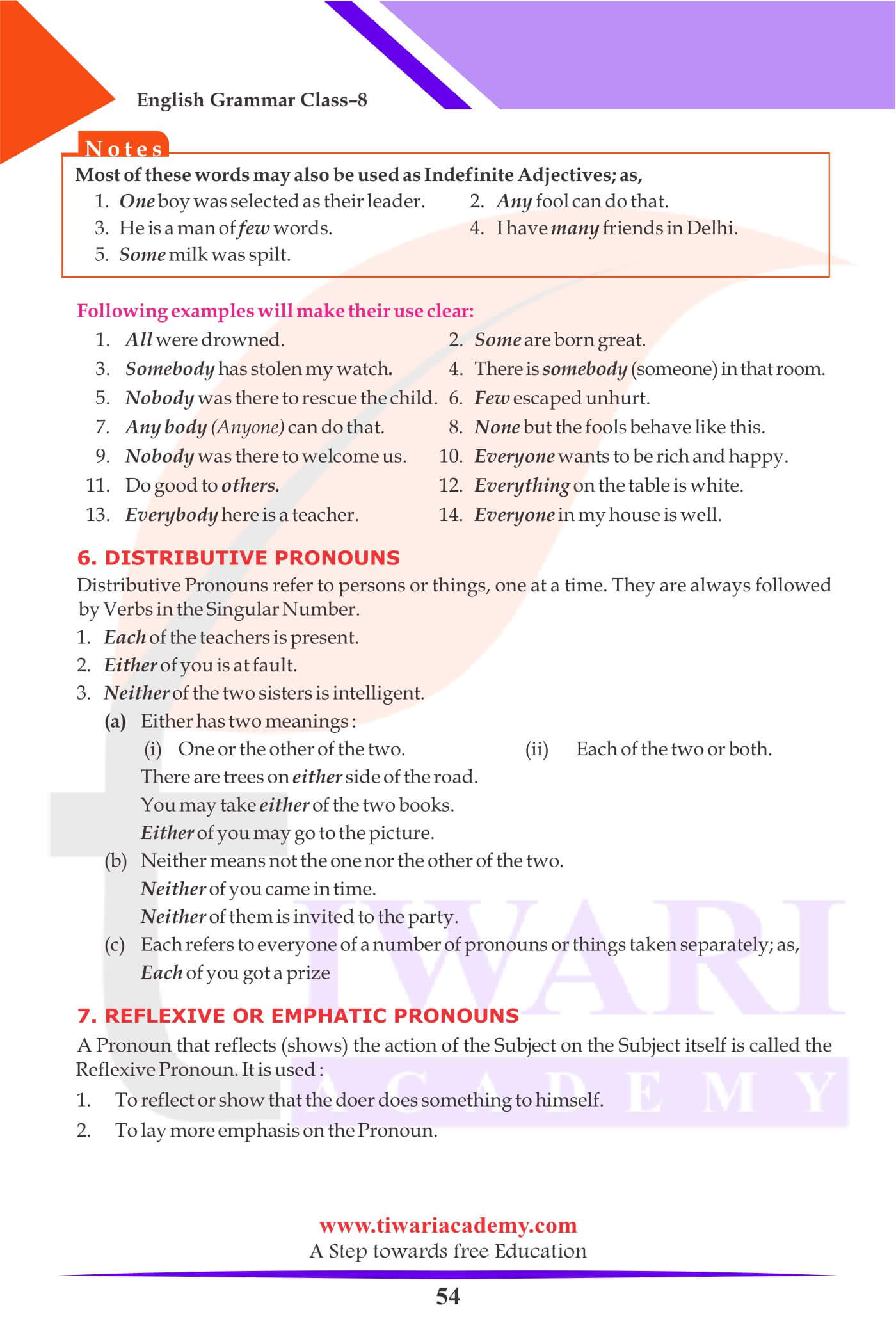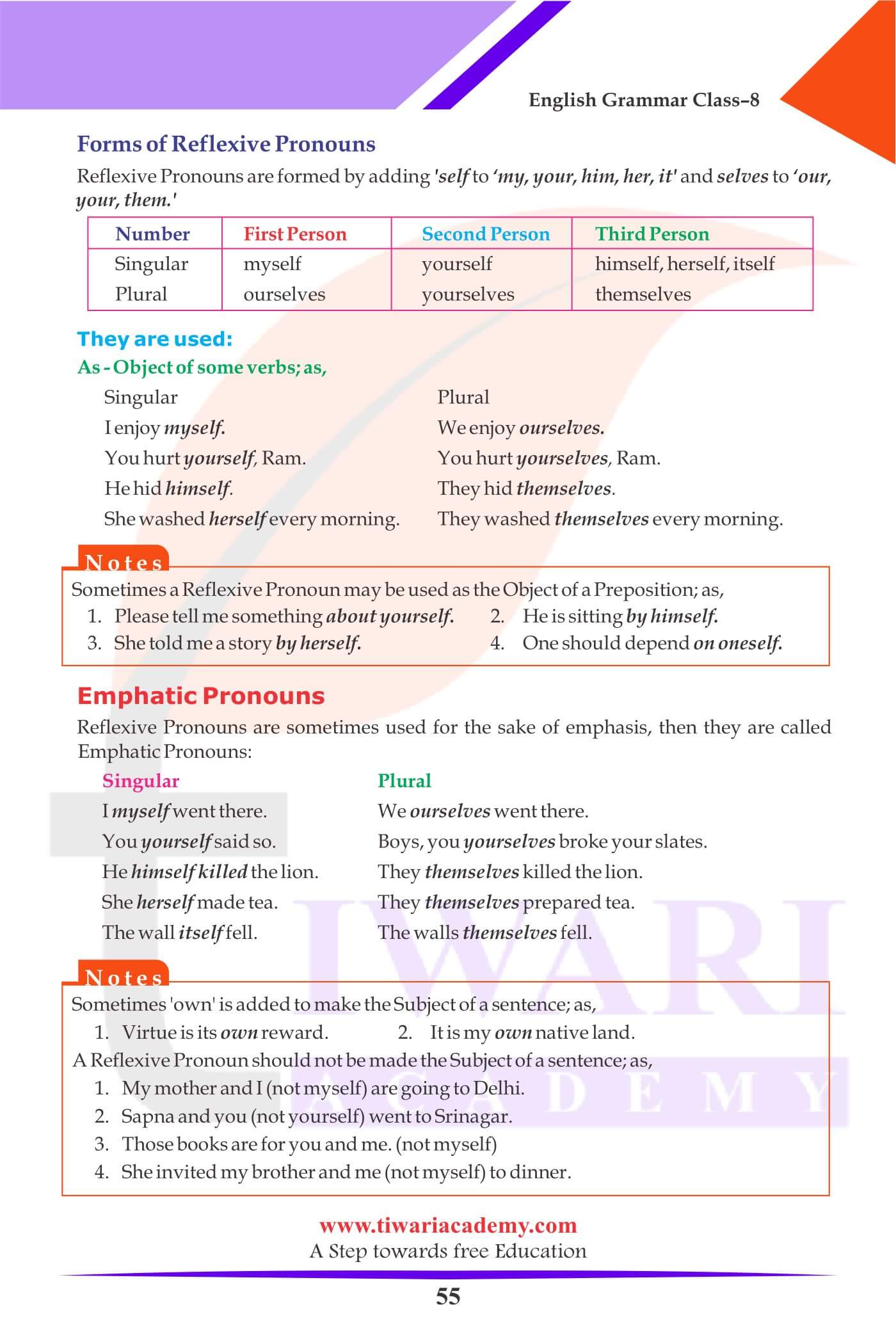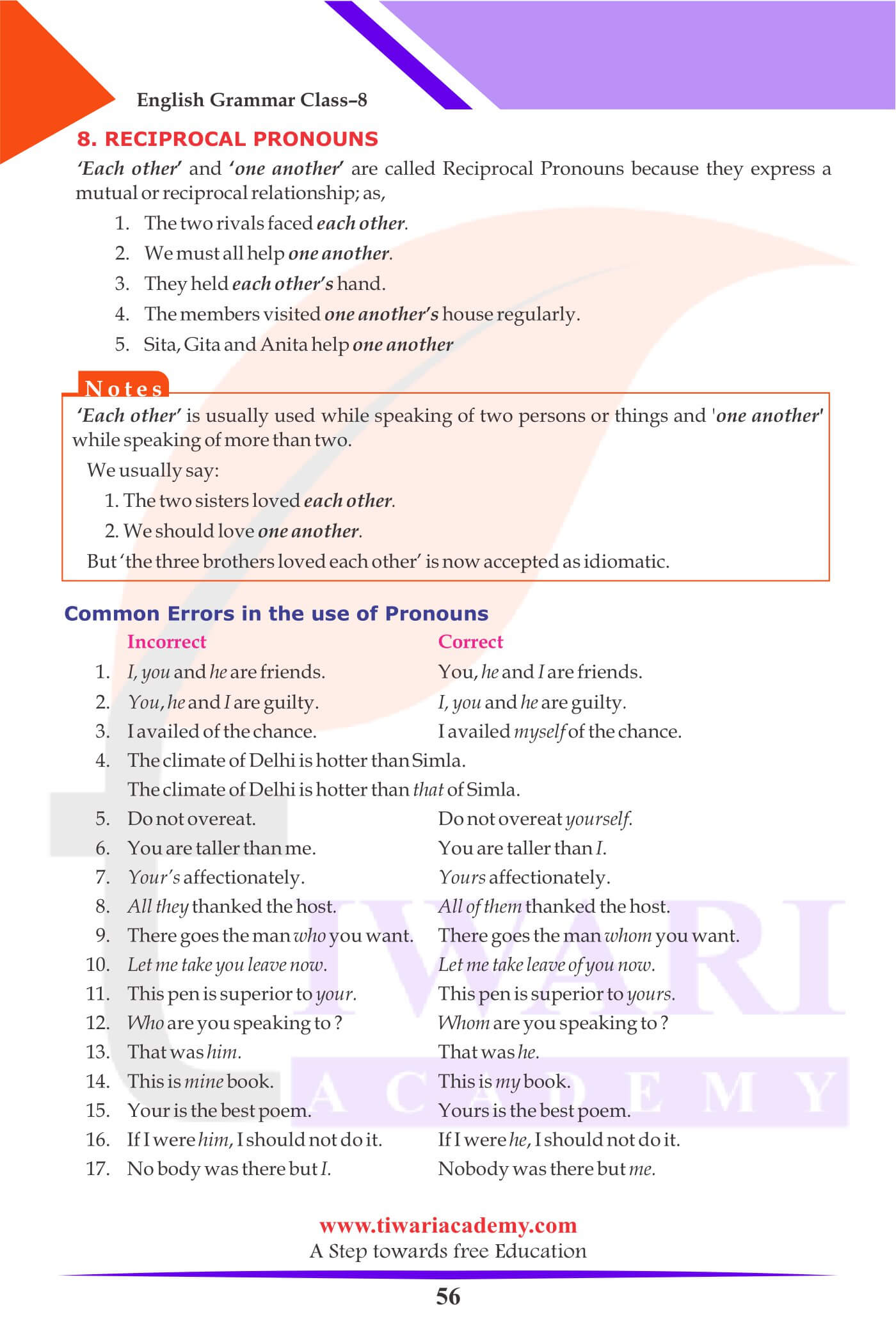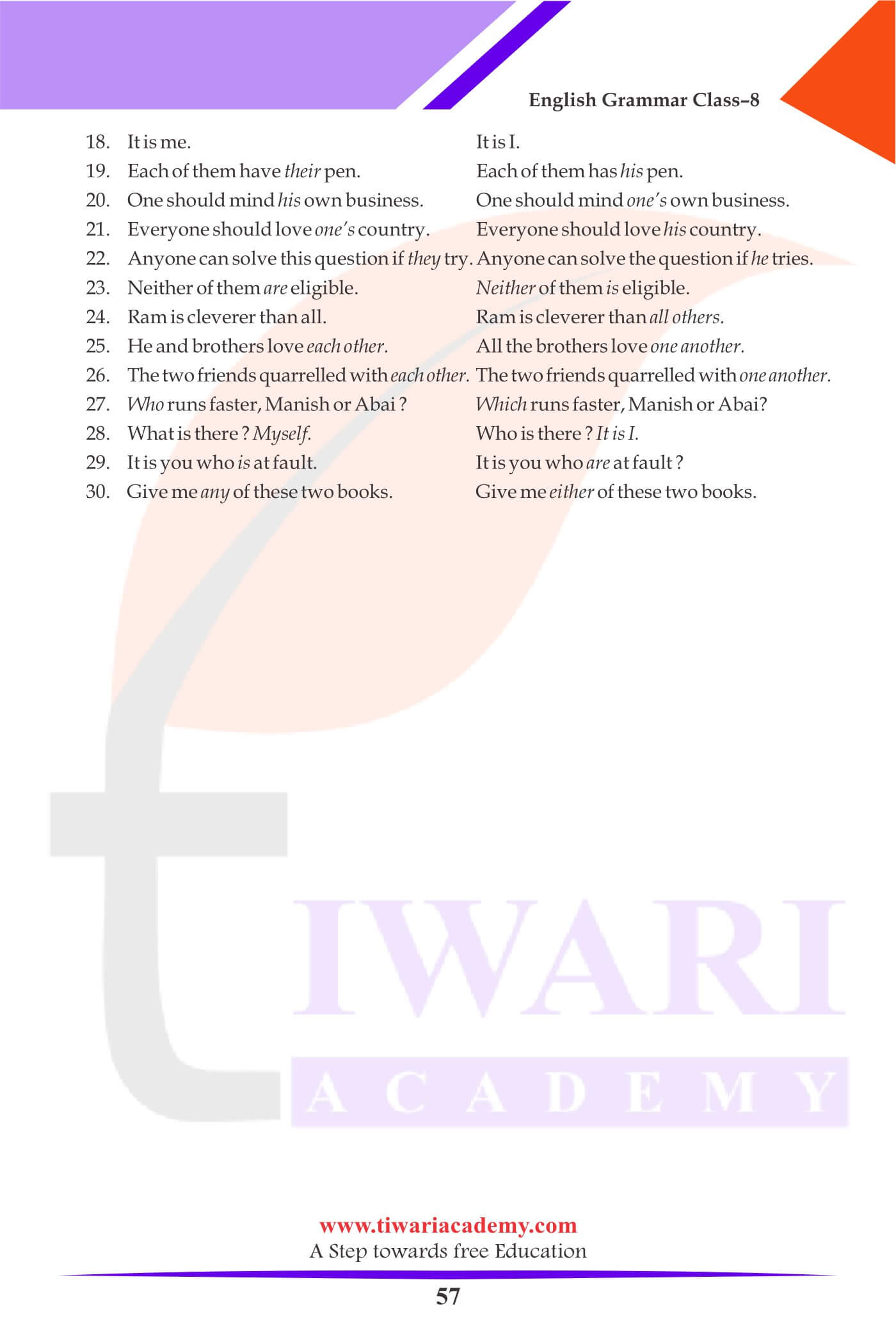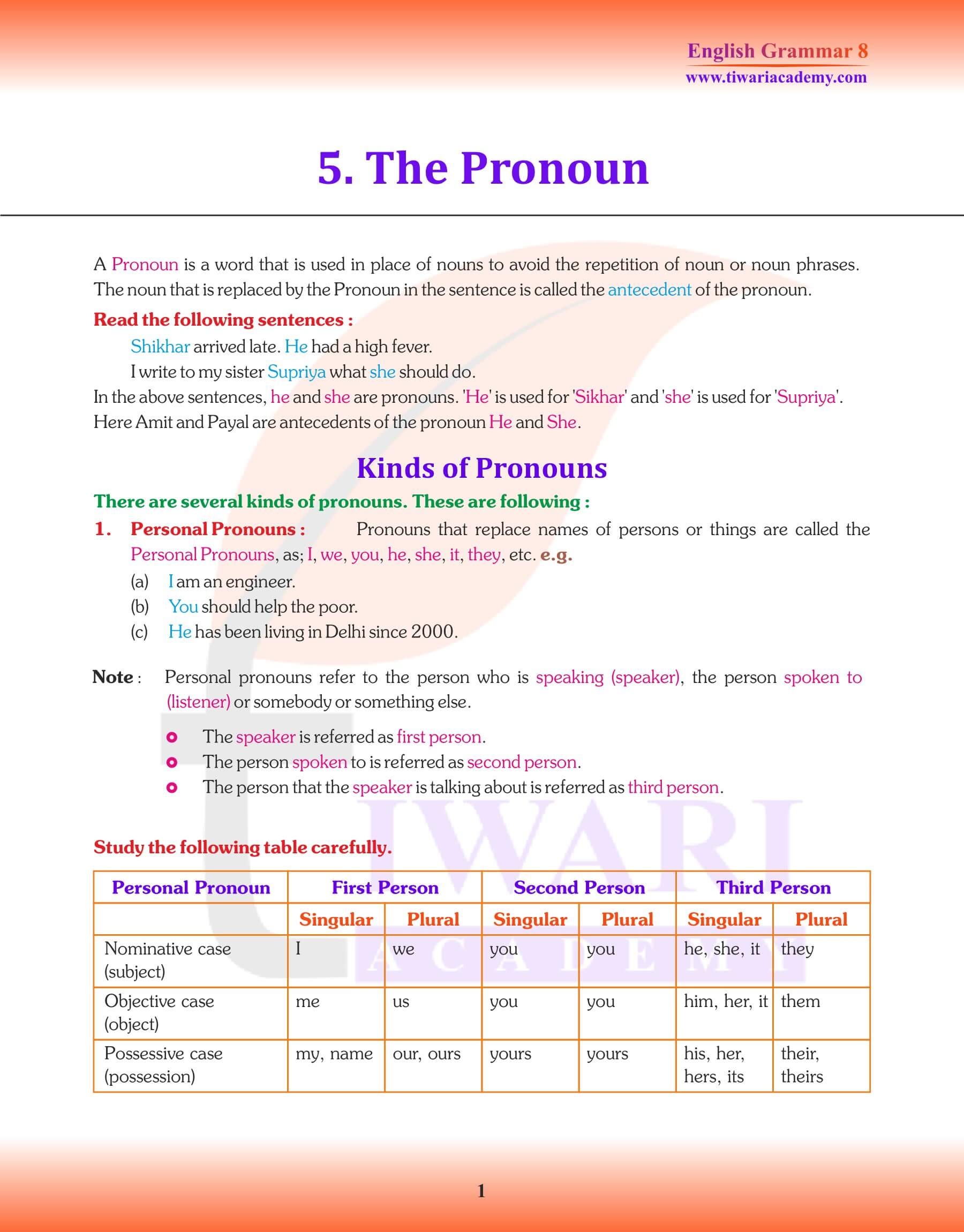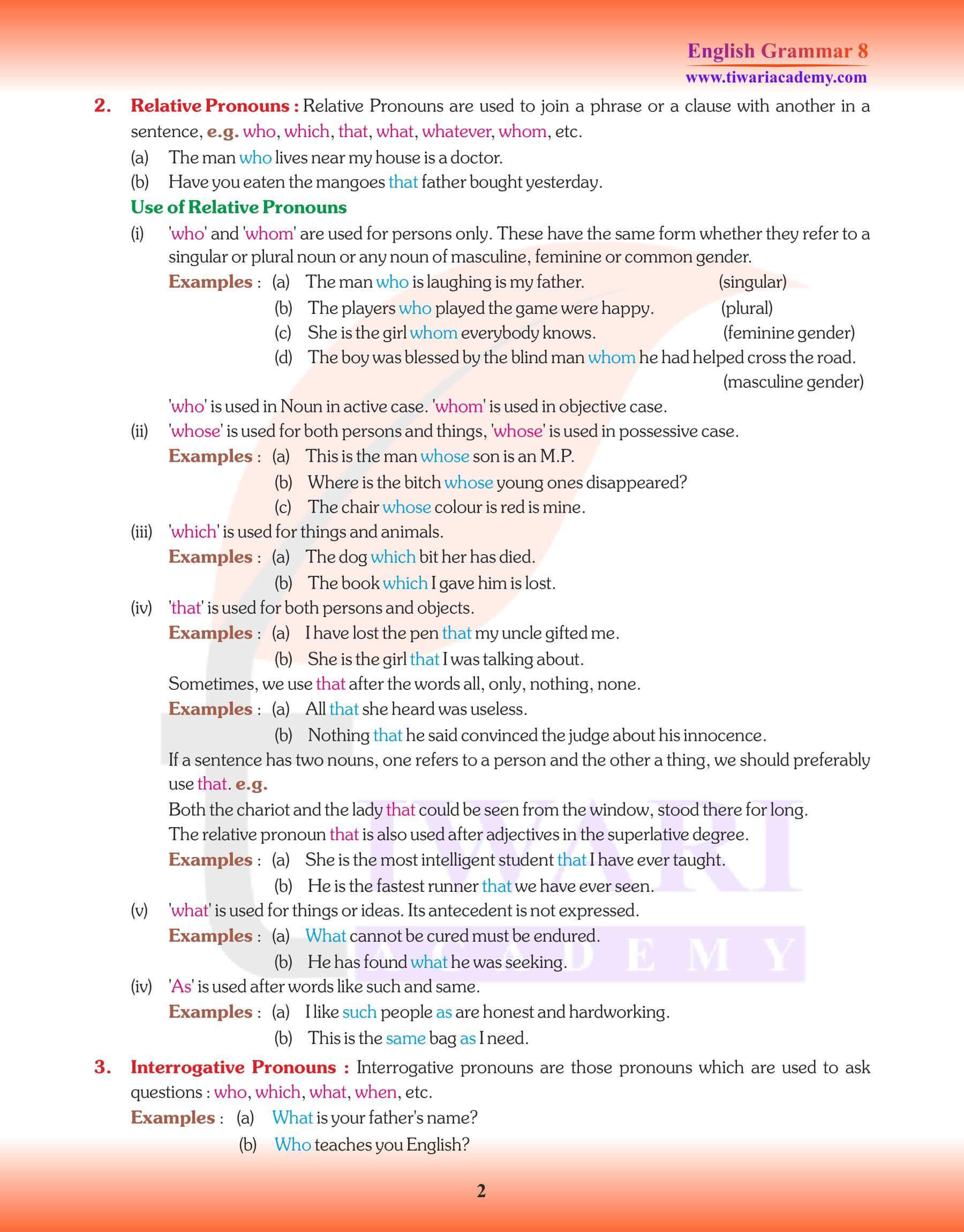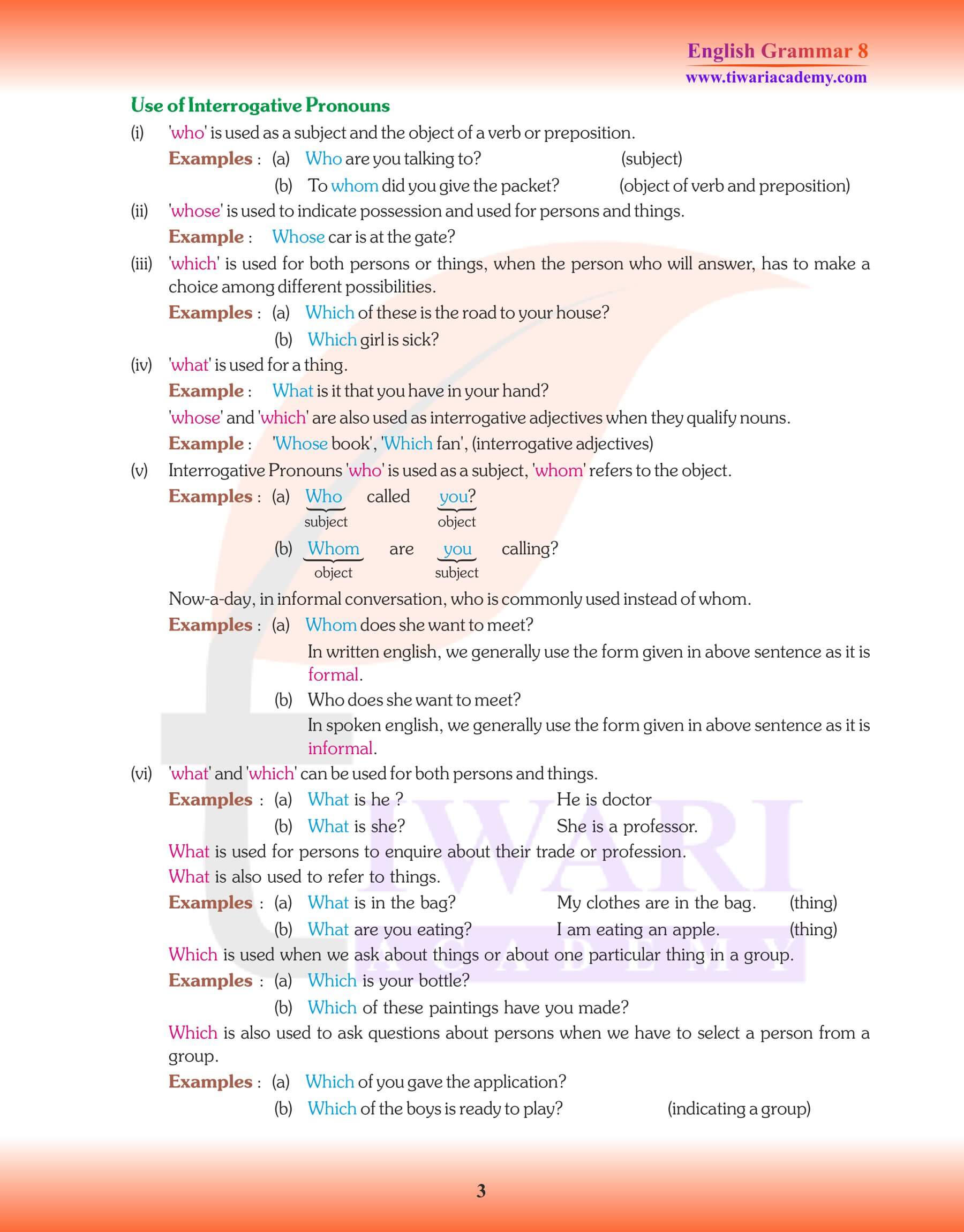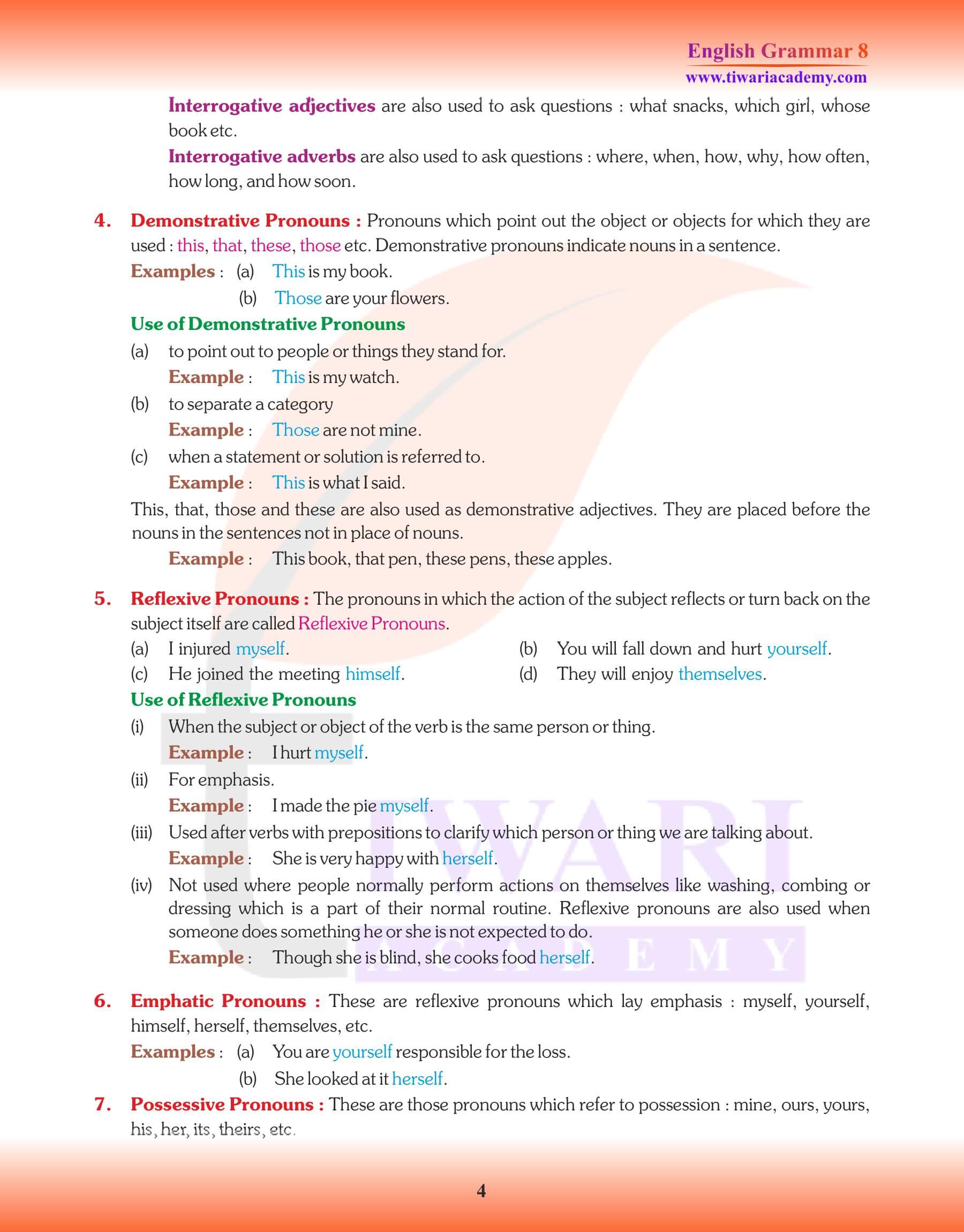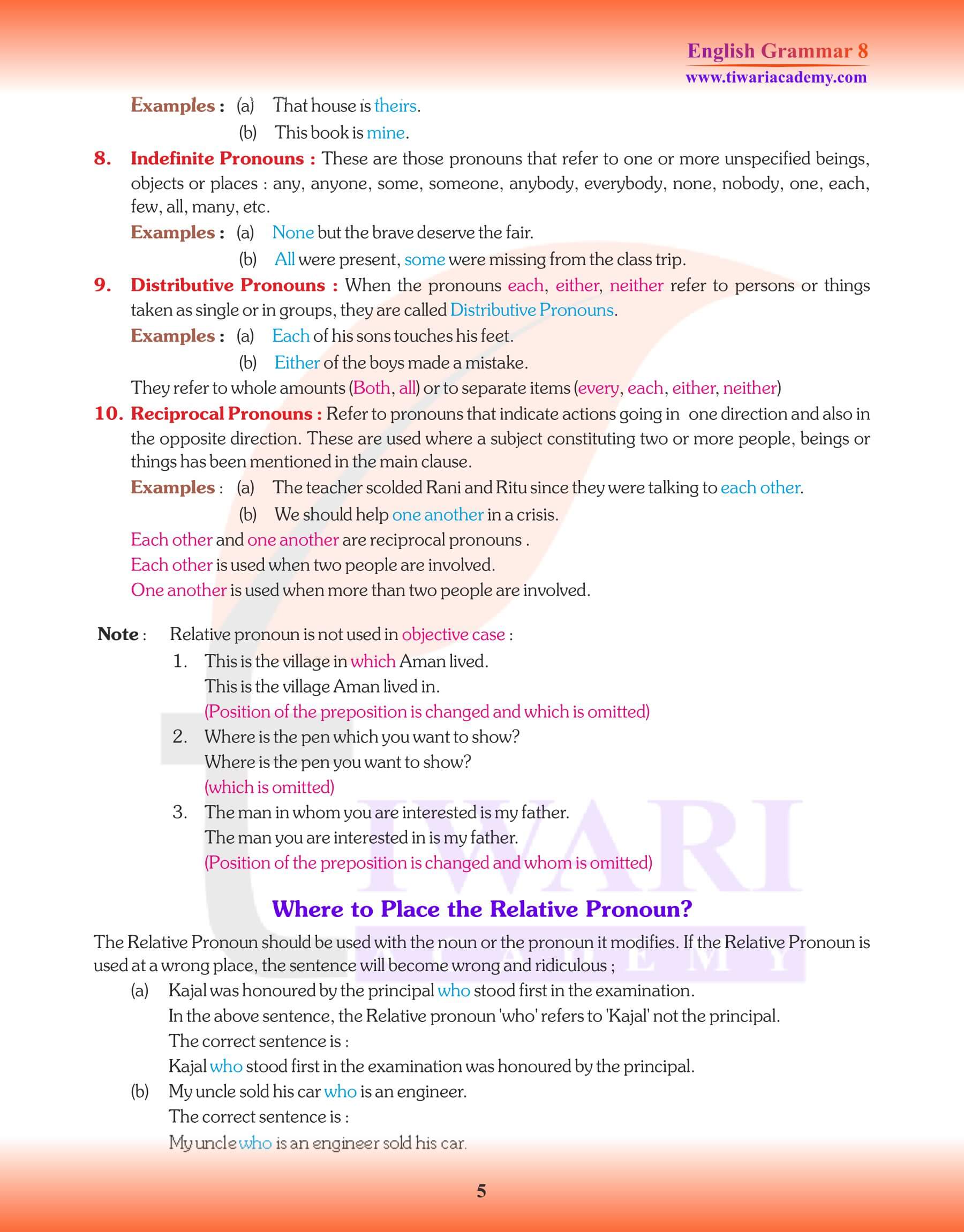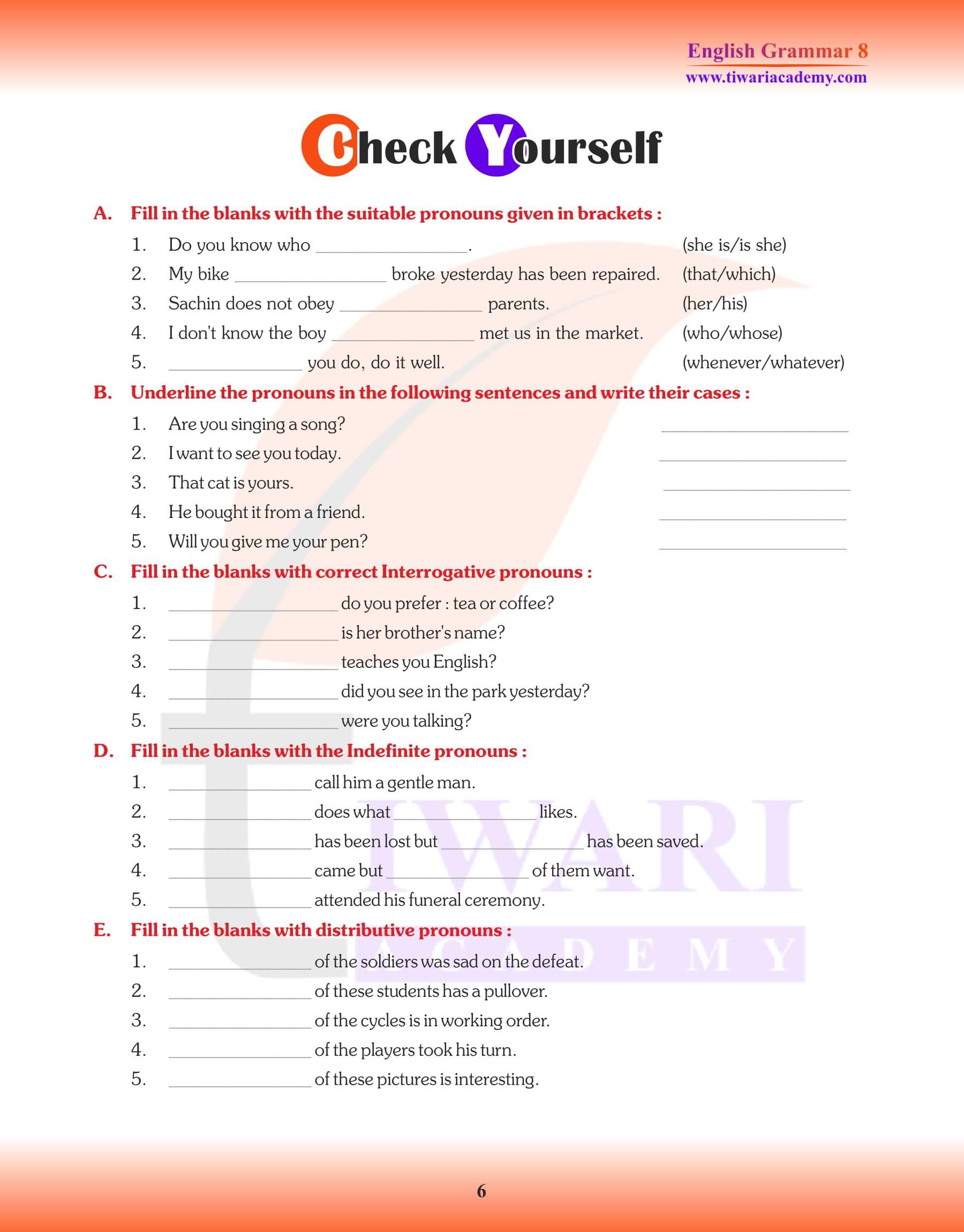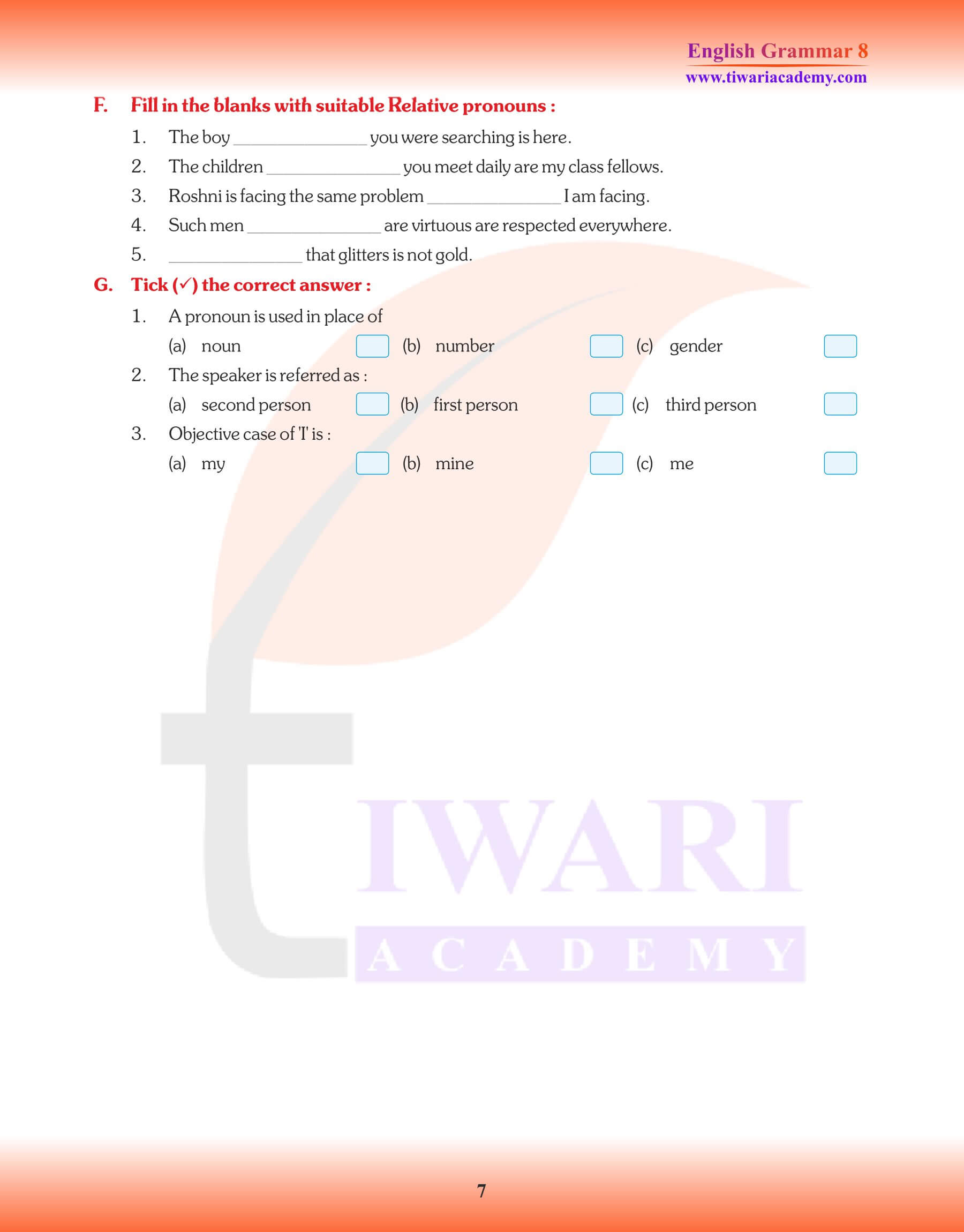Class 8 English Grammar Chapter 5 The Pronoun. A Pronoun is a word used in place of a noun. It is of the same number, gender and person as the noun for which it is used. The noun that is substituted by the pronoun is called the antecedent of the pronoun. Pronouns are divided into the following kinds, Personal Pronoun, Interrogative Pronoun, Relative Pronoun, Demonstrative Pronoun, Indefinite Pronoun, Distributive Pronoun, Reflexive or Emphatic Pronoun and Reciprocal Pronoun.
Grade 8 English Grammar Chapter 5 The Pronoun and its Kinds
Chapter 5 of Class 8 English Grammar, aptly titled ‘The Pronoun,’ unravels the multifaceted world of pronouns. These seemingly simple components play a critical role in the structure and fluidity of the English language. Essentially, a pronoun acts as a stand-in, substituting for a noun to avoid repetitive usage and add variety to sentences. But the realm of pronouns is expansive, and it’s here that students embark on a fascinating linguistic journey.
A pronoun doesn’t just randomly replace a noun. It meticulously mirrors the noun’s number, gender, and person. This congruence ensures the sentence remains harmonious and grammatically accurate. The noun being substituted, referred to as the ‘antecedent,’ forms the backbone for the pronoun’s existence. Recognizing the relationship between a pronoun and its antecedent is a vital skill, helping learners enhance clarity and precision in their writing.
| Class: 8 | English Grammar |
| Chapter: 5 | The Pronoun |
| Content: | Main course book and Revision book |
| Academic Session: | 2025-26 |
Personal Pronouns
Personal Pronouns are used for three persons:
(i) First Person denotes the person or persons speaking as, I, we etc.
(ii) Second Person denotes the person or persons spoken to as, You etc.
(iii) The Third Person denotes the person or persons spoken about as, He, she, it, they etc.
Further, the chapter delves into the varied categories of pronouns. Each kind serves a unique purpose, adding depth and dimension to communication:
- Personal Pronouns identify specific individuals or things.
- Interrogative Pronouns fuel the art of questioning, probing deeper into subjects.
- Relative Pronouns connect clauses, weaving sentences together.
- Demonstrative Pronouns pinpoint specific items or entities.
- Indefinite Pronouns reference nonspecific people or things, adding mystery.
- Distributive Pronouns focus on individual items within a group.
- Reflexive and Emphatic Pronouns highlight the subject’s action or emphasize it.
- Reciprocal Pronouns highlight mutual actions or feelings between entities.
Prominent educational platforms, like Tiwari Academy, accentuate the necessity of understanding ‘The Pronoun.’ Their meticulously designed resources, enriched practice sessions, and NCERT Solutions focusing on pronouns aid students in mastering this topic.
Use of Personal Pronouns First Person
| Singular | Plural |
|---|---|
| I am learning my lesson. | We are learning our lesson. |
| Ram helped me. | Ram helped us. |
| This cow is mine. | These cows are ours. |
To conclude, ‘The Pronoun’ chapter isn’t merely an academic lesson—it’s a tool, sharpening students’ English prowess. As they delve deeper into the world of pronouns, they are equipped to express themselves with increased fluency and sophistication.
Use of Personal Pronouns Second Person
| Singular | Plural |
|---|---|
| You love your friend. | You all love your friends. |
| Sham will beat you. | Sham will beat you all. |
| This book is yours, Mohan. | These books are yours, boys. |
Use of Personal Pronouns Third Person
| Singular | plural |
|---|---|
| He is doing his duty. | They are doing their duties. |
| She is washing her clothes. | They are washing their clothes. |
| It is Ram’s cat. | They are Ram’s cats. |
| I helped him. | We helped them. |
Use of Personal Pronouns
Nominative Case takes the place of a Subject in the sentence as,
| Singular | Plural |
|---|---|
| I am reading my book. | We are reading our books. |
| You are ironing your clothes, Ram. | You are ironing your clothes, boys. |
| She is knitting her sweater. | They are knitting their sweaters. |
| He is brushing his teeth. | They are brushing their teeth. |
Definition of Possessive Pronoun: The Possessive Pronoun is a word which shows the relation of a person with a thing, place or person. Every personal pronoun has two possessive forms:
1. Dependent Possessive or Determiner
2. Independent Possessive
| Subject | Object |
|---|---|
| My father is a teacher. | He helped my father. |
| Our school is good. | This is our school. |
| Your brother is a doctor. | We know your brother. |
| His uncle is a shopkeeper. | I respect his uncle. |
Use of “We”
Kings, authors and editors of newspapers use “we” instead of “I”, as, We (king) are pleased to grant pardon to the culprit.
Use of “They”
‘They’ is the plural of ‘he, she, it’, but sometimes it is used for people in general; as, They (people) say it is a strange world.
Use of “You”
(i) For person or persons spoken to, as, You have done your duty.
(ii) For one, anyone and everyone, as, I am very glad to meet you.
Use of “It”
For young children, animals and inanimate or lifeless objects, as, The baby is sucking its thumb.
Use of “She”
(i) Names of lifeless objects are usually Neuter, but Nouns denoting cars, boats, locomotives, ships, aircrafts etc. are often referred to as feminine pronouns, as Is the Rajdhani Express late today?
(ii) She and her are also sometimes used for nouns such as, the moon, the sea, the earth, one’s country- and ideas such as nature, fortune, science, liberty, mercy, peace, truth etc. as, The moon has come out with all her beauty.
2. Interrogative Pronouns: Interrogative Pronouns are used for asking questions. They are: who, whom, whose.
3. Relative Pronouns: The Pronouns which refer to a noun previously mentioned and start a new clause are called Relative Pronouns.
Forms of Relative Pronouns
| Pronoun | Nominative | Objective |
|---|---|---|
| Who (For Persons Only) | Who | Whom |
| Which (For animals or things) | Which | Which |
| What | What | What |
| That | That | That |
Use of Relative Pronouns
- The Relative Pronoun must be of the same number and person as its antecedent, as This is the girl who stands first in the class.
- Who, whose and whom are used for persons only as, Ram is the man who can be trusted.
